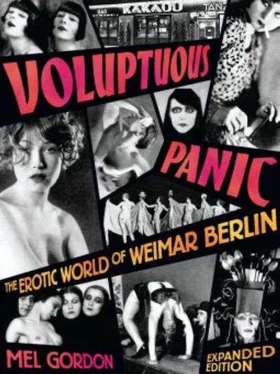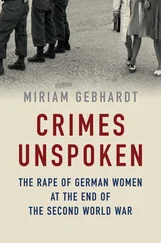This newest trend in Weimarism was a kick, imparting graphic life to Karl Lagerfeld, David Bowie (on his third go-round), German neo-noir costume film-epics, the Plasmatics, Macy’s lingerie ads (especially preceding Mother’s Day), Marquee-“O”-and-Skin glossies, Madonna-in-Gaultier-garb, a mini-genre of gay Holocaust weepies, Marilyn Manson, and a smash, brothelized import of that old workhorse, Cabaret .
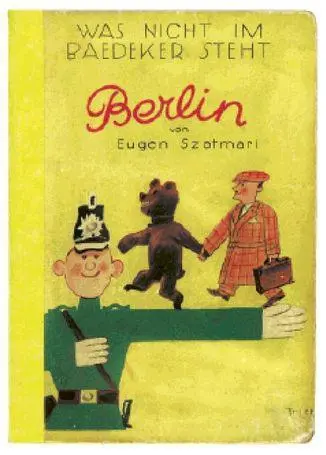
Berlin: What’s Not in the Baedeker Guide , 1927

So It Seems—Berlin! 1927
For the erotic trailblazers of the pre-millennium, the reimagined Weimar Berlin remained a cutting-edge, mythic terra firma. But even their heightened visions were still not as fantastic as history’s erotic metropolis.
How Berlin transformed from a minor neoclassical outpost in Goethe’s time to the third largest city in the world (with over four million registered citizens in 1930) is the subject of an immense body of urban-studies literature. While the external and sociopolitical factors of Berlin’s development have been analyzed in stupendous detail, one ineffable aspect has been largely ignored in these academic tomes: the unconventional religious profile of native Berliners throughout the nineteenth and twentieth centuries.
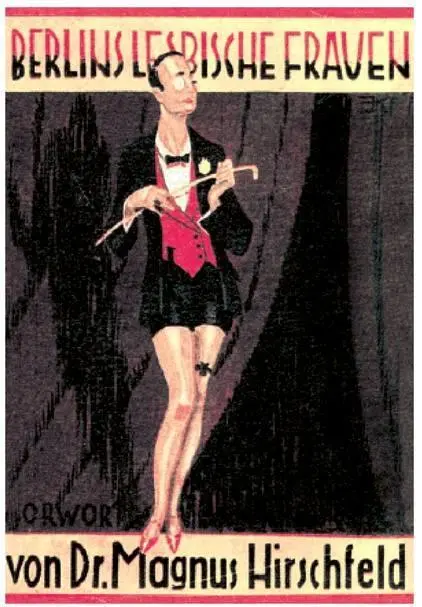
Ruth Margarete Roellig, Berlin’s Lesbians , 1928, a guidebook with an introduction by Dr. Magnus Hirschfeld
If it was possible to objectively measure the spiritual life of a city—through the language of its municipal charter, the legislative influence of its church leaders, the ratio of religious institutions to residents, its weekly church attendance, the judicious enforcement of Blue Laws, and so forth—then Berlin (with Montevideo and San Francisco) would have to be considered as one of the most faithless—or heathen—cities in the Western world. Much of the unvirtuous Berlin ethos can be explained by global events (the mass influx of French Huguenots and Central European Jews; the rise of modern capitalism) and ideological shifts (the weakening of Lutheran doctrine; trickle-down faith in scientific inquiry and Nietzschean vitalism); but, mostly by the creation of a self-conscious urban identity.
Before 1900, the archetypal Berliner was characterized by his crude—almost American—demeanor and breezy attitude toward aristocratic codes of conduct. He was deadly cynical, possessing a Berliner Schnauze (Berlin snout or “trap”), spoke in a side-of-the-mouth patois, and never missed an occasion to deliver a schpritz of wiseguy wisdom. A city of such characters was a distinct liability to the stodgy monarchy.
The harsh imposition of Wilhelmian law and threats of Prussian discipline kept the anarchistic urban-swamp in check. But in 1919, with the Kaiser gone and a democratic constitution about to be proclaimed in Weimar, those legal strictures basically expired. The tapped-down moral restraints of bratty Berlin suddenly burst at the seams. The once quaintly roguish German metropolis was now an open city—open for sex. Or, as its many provincial detractors decried, “a new Hell on earth.”■
The Great War was the greatest sexual catastrophe that has ever befallen civilized man.
Magnus Hirschfeld,
The Social History of the World War , 1930
An ecstasy of eroticism cast the world into chaos.
Hans Ostwald,
The Social History of the Inflation , 1931
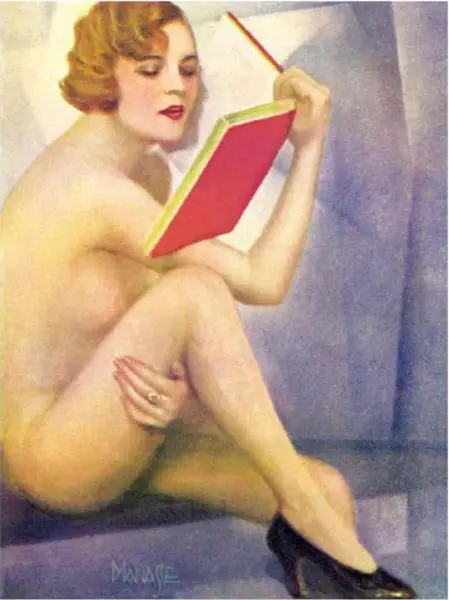
Manassé, The Forbidden Book
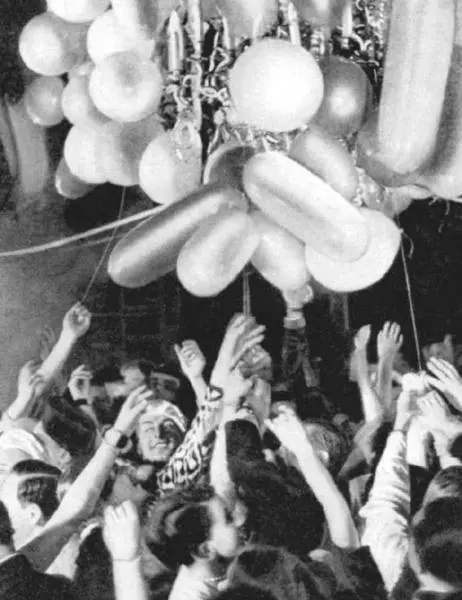
Keystone, Berlin
All wars,in the iron cosmology of Berlin’s leading sexologists, were a function of the male sex impulse and civilization’s attempt to manipulate it. Even the declarations of hostility, victory, conquest, and defeat have been oedipally recast into clear eroticized language and imagery. National opponents were said to be not mere adversaries but rampaging savages and demons, hell-bent on torture, violation of defenseless communities, and mass rape. Armed teenagers fighting in the service of their motherland were praised by writers of epics (or modern propagandists) as de facto protectors of the race, guardians slumped up against the bedroom doors of frightened mothers.
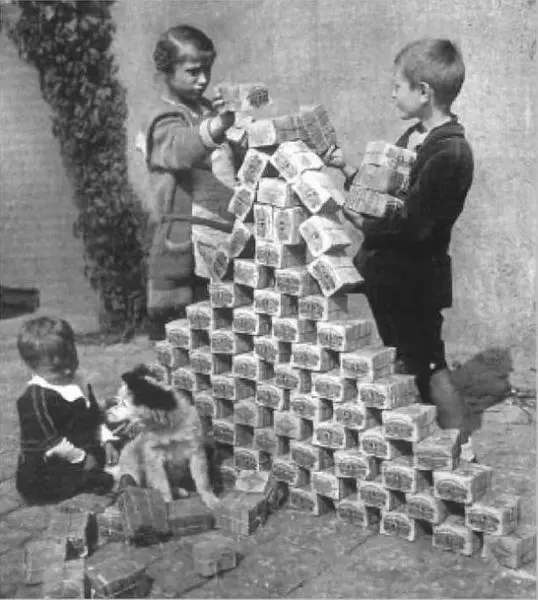
Play Money , 1924
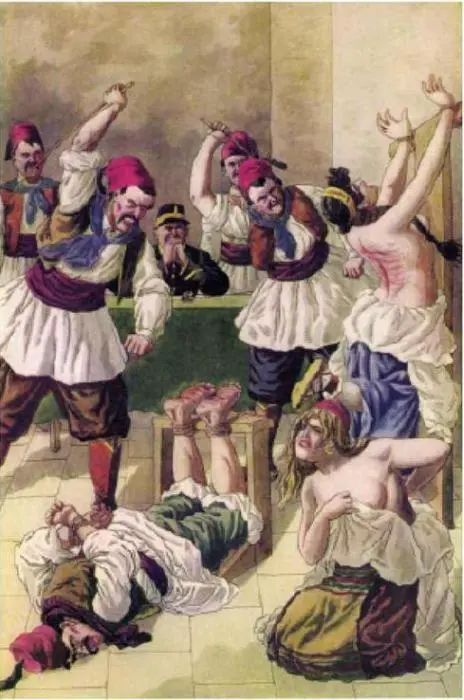
G. Sieben, Balkan Torture
Few national conflicts have been fought without these psych-war stratagems, or, more to the point, erotic inducements and rewards for its soldiers. The elevated levels of testosterone that biologically steel post-pubescent bodies and cloud the instinct for selfpreservation also increase sexual desire in young men. So it is little wonder that societies have traditionally accorded their warrior class (and consorts) dispensation from chastity and monogamous regulation.
The Great War, World War I, exaggerated the erotic fears and longings of its warring nations. For one, the heroic enterprise stretched out endlessly, endangering the morale and mental stability of both the conscripted soldiers and civilian populations. What was to be a five- or six-month, lightning-like military campaign, according to the Central Powers and Allied High Commands, soon stagnated into a battlefield morass. The wholesale human slaughter, thanks to the new technology of weaponry, actually hardened political attitudes and impeded the war’s conclusion. Given the astronomical numbers of casualties sustained in combat, no government could tolerate a defeat. There were also the perceived sexual issues, heightened by skilled propagandists.
When the Archduke Ferdinand and his wife Sofia were assassinated by Serbian nationalists in Sarajevo in 1914, much was made in the world press about the fanatical character of Balkan politics, Austrian arrogance (Ferdinand deliberately chose June 28th, the Serbian national day of mourning, to tour newly incorporated Bosnia), and the Great Power consequences. But during the six weeks between the shooting of Austro-Hungary’s heir apparent and the actual war, German propaganda played up one minor aspect of the Saravejo event: the Serbian Black Hands had needlessly murdered an aristocratic woman. This was further proof of the sexual perfidy of Slavic men. Serbs, Russians, Ukrainians, Macedonians, Poles, and all their lesser cousins were in need of the civilizing canon of the German army and its partners.
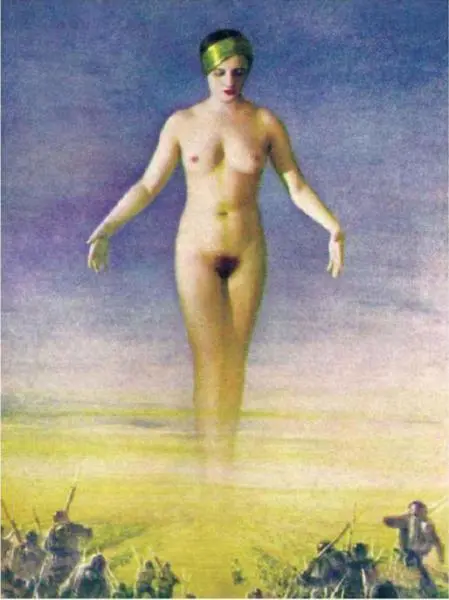
Manassé, War
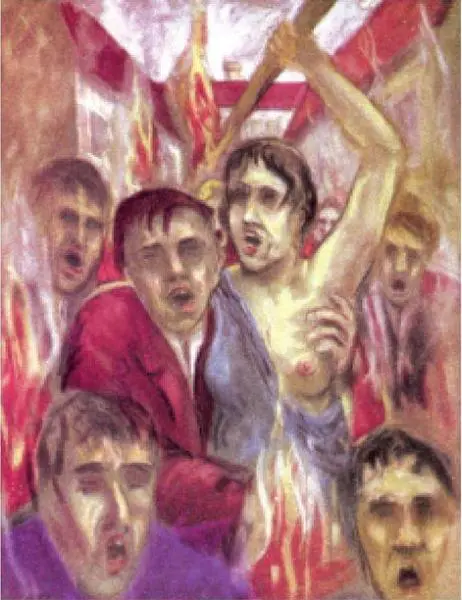
Ernst Hiller, Revolution
More than any country in Europe, Imperial Germany was prepared for war. Its High Command, over a tense decade, assiduously mapped out the grand project. And a circus atmosphere reigned in Berlin during the August mobilization. Kaiser Wilhelm II waved madly to the enlistees while a tennis racket dangled listlessly from his withered left hand. Yet the conflagration that erupted in September was anything but sporting.
Читать дальше
